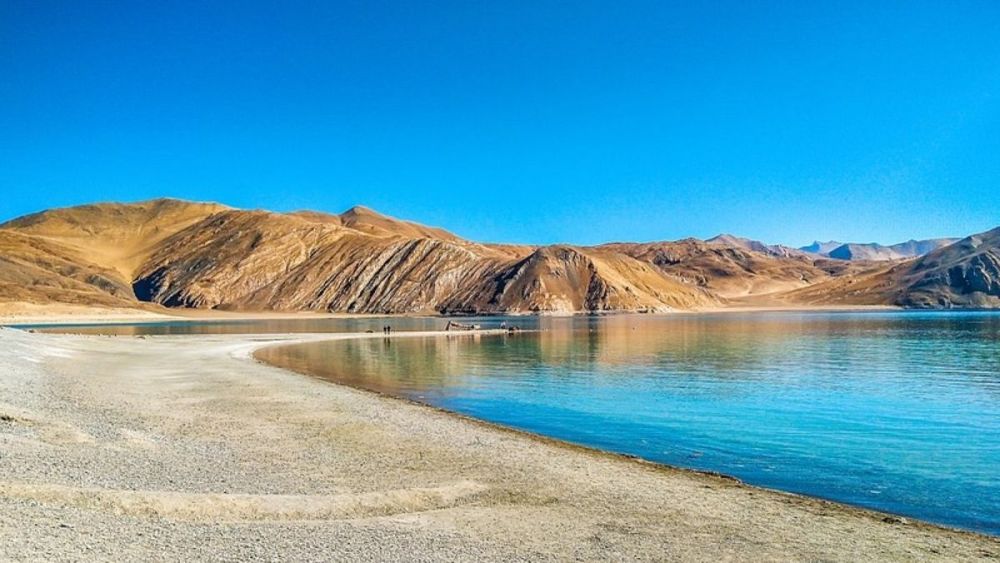

Pangong Tso, also known as Pangong Lake, is one of the most spectacular lakes in the world and is located in the high Himalayas of Ladakh, India. Situated at a staggering altitude of about 4,350 meters (14,270 feet), this endorheic lake stretches over 134 km, extending from India to China. A unique feature of the lake is that it does not drain into any river or sea; instead, it is fed by snowmelt from the surrounding mountains, which contributes to its high salinity. Known for its mesmerizing colors that seem to change from shades of blue to green to red, Pangong Tso has become one of the most sought-after tourist destinations in India.
The history of tourism at Pangong Tso can be traced back to the early days when it was a less-known destination primarily visited by the most adventurous travelers and local nomads. Access to the area was difficult due to harsh weather conditions and the absence of proper roads. However, the area became increasingly popular after the release of the Bollywood blockbuster "3 Idiots" in 2009, which featured Pangong Lake as a pivotal scene location. This catalyzed its popularity, leading to a significant boost in tourism.
With the growing influx of tourists, infrastructure developments such as the construction of motorable roads and accommodation facilities began to dot the landscape, offering better accessibility and a comfortable stay for visitors. Despite the logistical challenges posed by the remote location and delicate ecosystem, sustainable tourism practices are being promoted to mitigate the environmental impact.
The latest tourism trends in Pangong Tso revolve around the concepts of responsible travel and ecotourism. Visitors are increasingly aware of the environmental sensitivities of the region and are keen on minimizing their carbon footprint. Accommodations such as eco-friendly campsites and homestays that promote the use of local resources and less carbon-intensive living are becoming popular.
Another trend is the rise of experiential travel where tourists engage more deeply with the local culture. They partake in traditional Ladakhi festivals, sample the local cuisine, and immerse themselves in the lifestyle of the native people.
Adventure tourism has also been on the rise, with more travelers seeking to include activities like trekking, mountain biking, and photography tours as part of their visit to Pangong Tso. The lake's azure waters and scenic backdrop provide ample opportunities for these activities.
Travel Permits: Foreign nationals require a Protected Area Permit (PAP), while Indian nationals need an Inner Line Permit (ILP) to visit Pangong Tso due to its proximity to international borders.
Best Time to Visit: The best time to visit Pangong Tso is during the summer months from May to September, as the lake remains frozen during the winters, making it inaccessible.
Altitude Sickness: Due to the high altitude, there is a risk of acute mountain sickness, so tourists are advised to acclimatize properly and take necessary precautions.